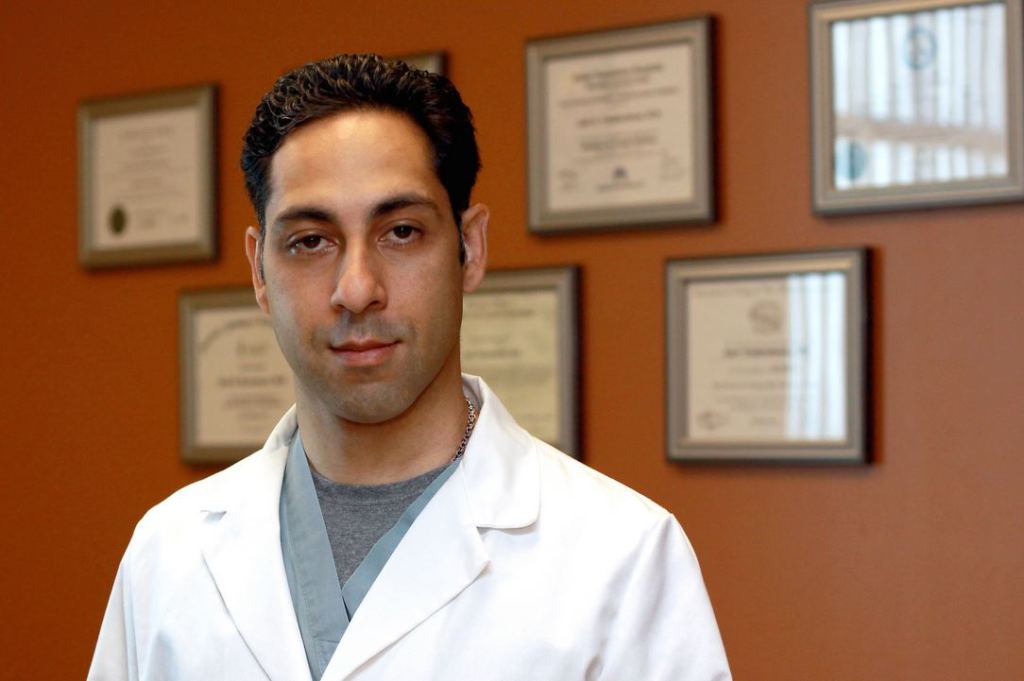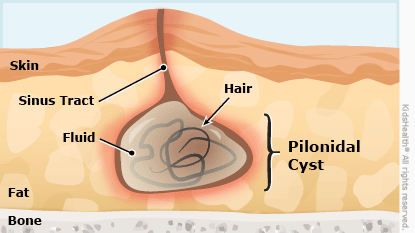 There’s nothing more unnerving than realizing your hair is departing your scalp and not showing any signs of returning.
There’s nothing more unnerving than realizing your hair is departing your scalp and not showing any signs of returning.
The term “alopecia” refers simply to any kind of hair loss, such as male pattern baldness. It happens to both men and women, and commonly the culprit can be alopecia areata, an immune condition often times brought on by a severe emotional stressor that leads to coin-size bare patches.
It can happen anywhere you have hair and can be even more dramatic such as in cases of alopecia universalis, where all hair including eyelashes and brows are shed permanently. Many people experience hair loss exhibited by common male pattern balding, as the hairline recedes in a u-shape, or the crown is exposed with the hair surrounding it intact.
It goes without saying and pardon the pun, but most people are attached to their hair. Monsters and Critics spoke to world recognized hair expert Dr. Amir Yazdan, who specializes in hair disorders, hair restoration, and unwanted hair removal.
He says, “About 90% of hair loss is genetically driven. In most cases, hair loss is inherited, which means it’s passed down from one or both of your parents. This is called male-pattern or female-pattern hair loss. If your hair is thinning, it happens slowly over time, so you may not notice the hairs falling out. If your hair is shedding, then clumps of hair fall out.”
Aging and issues with the thyroid gland, such as hypothyroidism and hyperthyroidism combines with decreasing hormone production all factor too according to Dr. Yazdan. Diet, overall health and mental and emotional stability are factors too.
Hair preservation for men and women comes with common sense fixes and avoidance.
Dr. Yazdan tells us today’s hipster hairstyle for men – the ubiquitous “man bun” – is tomorrow’s patient in his hair loss clinic.

“Wearing a man bun will create hair follicles damage. Why this hairstyle for men became popular I really don’t know. It puts extra tension on hair follicles and over time can lead to what’s called traction alopecia,” says Dr. Yazdan.
Other things Dr. Yazdan points out that will do a scalp harm are men wear tight-fitting hats, do-rags, beanies and baseball caps that are too tight. All of these habits, Dr. Yazdan points out, can lead to traction alopecia as well.
Women also hasten hair loss with wearing wigs, overdoing chignon styles or tight braids, adding extensions, and excessive coloring, chemical straightening will all damage the hair and the scalp. Anything that pulls on the hair repeatedly damages follicles over time. “Hair dyes, chemical straightening can cause damage to the scalp as well as the hair follicles if used incorrectly or frequently,” says Dr. Yazdan.
Using products that are useless, wrong or harmful will also harm follicles according to Dr. Yazdan. “Guys will use anything on their scalp if their hair starts to thin. From a solution that their aunt gave them to some product that they read about online. Lots of times, these products can damage the scalp and increase their hair loss. It seems that when men are desperate for hair, their number one choice isn’t to see a doctor who specializes in hair loss, it’s to search the internet for answers, and this is where they can get in trouble.”
Dr. Yazdan also cautions people into buying the hype about PRP therapy that news outlets are talking about currently. There are caveats. “This is not a Lazarus therapy,” cautions Dr. Yazdan. “It’s along the lines of the ‘vampire facial’ that became popular a few years back. PRP therapy is good for the under 30-year-old who is just starting to lose his hair. They still have hair follicles that are alive that can be rejuvenated with this procedure. If your lawn grass is brown and dry, you can water and fertilize and bring it back.”
Who is PRP not for? “The 45-year-old who has been losing his or her hair for the past 10 years. Their hair follicles are dead and cannot be rejuvenated by this procedure. If your lawn grass is dead, there is no reviving it,” says Dr. Yazdan.
“This is not a one-time procedure. It must be kept up year after year or your hair will just go back to the way it was. Like Botox treatments. If you stop, wrinkles eventually come back,” adds Dr. Yazdan.
Dr. Yazdan was called upon by CBS’ “The Doctors” team as an expert to help with a special case, an 8 year-old girl who lost a large portion of hair from her hair extension being yanked on by bullies.
Here he explains in detail how PRP works:
Lastly, hair transplant surgery is the most effective way to deal with bald areas on the scalp. But not all hair transplant surgery is equal.
“In the last two years, there has been a huge influx of doctors with little to no training advertising hair transplant surgery and hair transplant procedures. Just as you wouldn’t go to a doctor who learned eye surgery over a weekend course or learned laser eye surgery from the representative that sold him the laser eye machine, you shouldn’t go to a doctor or clinic that does not primarily focus on hair restoration procedures. The doctor needs to have adequate training and experience in this field of medicine,” cautions Dr. Yazdan.
“Many doctors are buying machines and devices praised at being the latest and greatest for hair transplant, however, they have no idea how to use them. They generally bring in assistants to perform the procedures and this puts patients at harm and at risk. So the number one thing I see men do to harm their hair follicles is having a procedure done with an inexperienced doctor.”

Dr. Yazdan also deals with people trying to manage their body hair situation and gave us his “laser hair removal 101” which is invaluable advice for people seeking this procedure out.
Sometimes excessive hair can be a huge problem, and people will go to drastic measures to rid their bodies of it. Men (rarer in women) can suffer terribly painful pilonidal cysts (pictured above) in their gluteal folds from problematic ingrown body hair, and women do everything under the sun to rid their bodies of hair for cosmetic reasons
“Generally the treatments are tolerated pretty well. Women, of course, have a much higher pain tolerance than men. If the areas being treated are too sensitive, they can always be pre-treated with a topical numbing cream which helps make the procedure more comfortable,” says Dr. Yazdan.
Safety is an utmost concern for patients when it comes to lasers, and using the right tool for the job is key. “Laser hair removal is safe if it is being performed by licensed, and qualified staff,” says Dr. Yazdan. “The legalities of laser hair removal vary between states. Some states require nothing more than a lay person purchasing a laser and setting up shop while some states require that only a physician perform laser hair removal. Then you have everything else in-between. It’s important to note that this is a medical procedure. Patients should be evaluated by a physician who can assess whether the patients are a good candidate or not and discuss the risks and benefits with the patients. In general, the lighter your skin color, the safer laser hair removal is. In African American patients, laser hair removal can be extremely dangerous in the hands of the wrong operator.”

For those who are tired of repeated waxing, lasering can be a cost-effective permanent solution. “With laser hair removal, patients can expect to receive on average about a 70% reduction in hair after 6-8 treatments,” says Dr. Yazdan.
A doctor’s office is always better. As with any medical procedure, there can be complications and it is important to have a physician available to manage those complications. “Many times in my practice we get patients who were treated at a spa and have suffered burns or other reactions to the laser and they are left without any medical care or follow-up because the spa does not have the appropriate knowledge to treat the patients,” says Dr. Yazdan.
Avoid going cheap with any cosmetic procedure, especially the temptation to go “Groupon” shopping for any medical procedure. “Generally, I say no. At the end of the day, you get what you pay for,” says Dr. Yazdan. “Would you board an airplane with a pilot that has no idea what they are doing? This is your body and your skin. There are those that will receive no results and waste their time and money. Then there are those that will have permanent burns and scarring and need to see a plastic surgeon and a dermatologist to have their burns treated and their scars minimized. Generally, if you are receiving treatments at a Board Certified Physician’s Office you can expect that they know what they are doing. I would be cautious with spas and salons offering laser hair removal services with no physician supervision. This is where the majority of problems, and Groupon deals, happen.”
